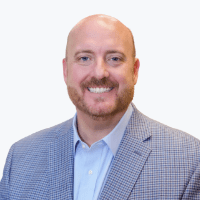Reinventing benefits for younger generations
August 29, 2023

Episode details
New research from LIMRA and EY shows that workplaces have reached a "generational tipping point." Millennials and Gen Z employees now make up the majority of the workforce — and are on pace to constitute 60% by 2031.1 These younger workers (42 years old and under) have different benefit preferences from the Baby Boomers and Gen X cohorts for whom benefits have traditionally been designed, and greater needs when it comes to benefits education and enrollment. LIMRA's Kimberly Landry joined John Stibal from Unum and Michael Stachowiak from Colonial Life to discuss how HR should react to this profound generational shift.
-
A much broader view. According to Landry, LIMRA's second annual Benefits and Employee Attitude Tracker (BEAT) study shows that younger employees still want core benefits above all else. But they also want their benefits package to include a wider variety of supplemental health, wellness, mental health and other benefits. "The benefit programs of the future need to be more customizable and provide more options for employees to pick and choose from," says Landry. [02:02]
-
More choice means more confusion. As employers offer a larger number of benefits, they will need to increase their efforts to educate younger benefit consumers, according to Stachowiak. Stibal agrees that education is important to making informed decisions because with choice, "your employer is not making the decisions for you any longer." [04:00]
-
More benefits are more important. According to the LIMRA/EY Harnessing growth and seizing opportunity: 2023 Workforce Benefits Study, employers and employees both assign a high degree of importance to a fairly long list of benefit options. To compete effectively for talent, employers need to show that their benefits portfolio contains a wide range of choices to fit employees' differing needs. "About half of the employers in our survey told us they expect to be increasing the number of benefits that they offer in the next five years," Landry says. [06:30]
-
Disability awareness is down, indicating an education opportunity. One troubling finding in the LIMRA research is the relatively low importance participants assigned to disability insurance. Stibal says that's where education comes in. "The GoFundMe strategy is a strategy, but not a good one for the long term," he says. "Employers need to make sure people understand where their risks lie and what they need to do to shore up those risks." Stachowiak points out that the multigenerational workforce combined with the rise in benefit choices means that "a one-size-fits-all benefit education program just isn't going to be effective moving forward." Employers will need to tailor their approaches to their particular employees and benefit programs. [08:47]
-
The biggest change since last year? Importance of leave. Employer perception of the importance of paid family and medical leave benefits jumped 26% over last year, as shown in the LIMRA/EY study. "Paid family leave sounds simple, but it's really, really complicated for employers," says Stibal. Between complying with multiple federal, state and local leave laws and creating a good experience for employees administering leave is a challenging issue for employers. Employers may want to outsource leave management to a carrier who can provide a good combination of technology and human support. [13:00]
-
The "Wheel of Wellness." LIMRA looked at benefit priorities across five dimensions of wellness: physical, mental, financial, professional and societal. Across the generations, younger employees placed more priority on societal wellness (volunteer opportunities, charitable donation matching, etc.) and mental health. Landry and Stibal believe mental health benefits are going to be a key area for employers to strengthen. [18:10]
-
Employees want personal assistance. Stachowiak says that employees increasingly want human assistance in benefits enrollment, whether in person or over the phone. Landry confirms this, "Two of the top five preferred benefits communication methods were digital experiences. But the other three were all in-person approaches," she says. [23:00]
-
How does all this factor into enrollment? As employers offer more benefits and as employees need more education, it's important to be mindful about how you roll out your benefits enrollment. Some best practices:
- Spread communication out over time in a drip campaign instead of bombarding employees with an overwhelming amount of information all at once
- Talk about only one or two benefits at a time, so employees can pay equal attention to all their options
- Communicate more about brand-new or unfamiliar benefits
- Encourage employees to start enrolling early in the enrollment window, so they have time to ask questions and make informed decisions [27:12]

Report
Top 4 insights from the Unum Employer Insights Survey
Learn how employers are using leave benefits to boost recruitment and retention in an age of rising employee expectations.
Featured speakers

Kimberly Landry
Associate Research Director, LIMRA
Kimberly Landry is an Associate Research Director for Workplace Benefits Research at LIMRA. She conducts quantitative and qualitative research on hot topics within the employee benefits industry, with a specific focus on employer and employee perspectives. She is also responsible for LIMRA's worksite and supplemental health research programs. She is a frequent speaker at industry conferences and events. Kim joined LIMRA in 2008. She received her bachelor's degree from Wesleyan University and her master's degree from the University of Hartford.

John Stibal
Senior Vice President, Sales and Client Management, Unum
John Stibal is responsible for the strategic oversight of Unum's U.S. sales and client management operations and has held several leadership roles during his 36 years with Unum. Prior to assuming his current role, John served as Regional Vice President of Sales and Client Management for the Northeast region and for the Midwest region before that. Earlier, John was Vice President of Channel Development, responsible for sales recruiting and training, sales and broker compensation planning, and oversight of strategic distribution partnerships. John has experience working in several Midwest markets, including Kansas City, St. Louis, Minneapolis and Chicago. John received his bachelor's degree from Emporia State University with a double major in business administration and marketing. He currently serves on the Board of Directors for Make-A-Wish, Maine.

Michael Stachowiak
Senior Vice President and Head of Sales, Colonial Life
Michael Stachowiak is responsible for leading the sales and recruiting activities for Colonial Life's 14,000-member national sales organization. He has almost two decades worth of experience in sales and leadership from across the country. His previous experience includes leading broker and sales teams and spearheading national field and broker strategies across the West coast and in the states of California, Washington and Oregon. Michael is a graduate of The School of Business at Portland State University and holds a degree in business administration and human resource management. He currently serves as an Editorial Board member for Voluntary Advantage.
About the host

Clare Morin
Content Marketing Manager, Unum
Clare Morin is the Content Marketing Manager at Unum and a journalist who's spent the last 20 years interviewing hundreds of thought leaders on topics ranging from wellness to culture, finance, human resources and technology. Born in the UK, raised in Hong Kong and based in the U.S. since 2009, she brings a global outlook to the HR Trends studio.
You may be interested in

Webinar
How to build the leave experience your employees deserve
April 12, 2023
Join us as nationally recognized employee-leave experts discuss new ways to create an exceptional leave experience, with tactics you can implement today.

Podcast
Leave's new look: 2023 trends HR should know
June 28, 2023
Employers are addressing higher employee expectations with new takes on leave. Listen as leading experts discuss the implications.
If you need legal advice on a particular situation, please contact your own attorney.
1 LIMRA and EY, Harnessing Growth and Seizing Opportunity: 2023 Workforce Benefits Study, 2023.



